Zone
Crash of a Piper PA-31-350 Navajo Chieftain in Weston
Date & Time:
Oct 26, 2015 at 1233 LT
Registration:
N55GK
Survivors:
Yes
Schedule:
Jacksonville – Fort Lauderdale
MSN:
31-7852013
YOM:
1978
Crew on board:
1
Crew fatalities:
Pax on board:
2
Pax fatalities:
Other fatalities:
Total fatalities:
0
Captain / Total hours on type:
105.00
Aircraft flight hours:
6003
Circumstances:
The airline transport pilot of the multiengine airplane had fueled the main (inboard) fuel tanks to capacity before the cross-county flight. As the flight approached the destination airport, an air traffic controller instructed the pilot to turn right for a visual approach, and the pilot acknowledged. Subsequently, the pilot reported that he might have to land on a highway. The airplane impacted a marsh area about 15 miles from the destination airport. Review of data downloaded from an onboard engine monitor revealed that the right engine momentarily lost and regained power before experiencing a total loss of power. Examination of the wreckage revealed that the left propeller was feathered and that the right propeller was in the normal operating range. Sufficient fuel to complete the flight was drained from the left wing fuel tanks. Although the right wing fuel tanks were compromised during the impact, sufficient fuel was likely present in the right main fuel tanks to complete the flight before impact because both the left and right main fuel tanks were fueled to capacity concurrently before the flight, but it likely was in a low fuel state due to fuel used during the flight. The right wing main fuel tank was not equipped with a flapper valve, which should have been located on the baffle nearest the wing root where the fuel pickup was located. The flapper valve is used to trap fuel near the fuel pickup and prevent it from flowing outboard away from the pickup. The maintenance records did not indicate that the right main fuel tank bladder had been replaced; however, the manufacture year printed on the bladder was about 20 years before the accident and 16 years after the manufacture of the airplane, indicating that the bladder had been replaced at some point. When the right main fuel tank bladder was replaced, the flapper valve would have been removed. Based on the evidence, it is likely that maintenance personnel failed to reinstall the flapper valve after installing the new fuel bladder. This missing valve would not affect operation of the fuel system unless the right main fuel tank was in a low fuel state, when fuel could flow outboard away from the fuel pickup (such as in a right turn, which the pilot was making when the engine lost power), and result in fuel starvation to the engine.Toxicology testing of the pilot revealed that his blood alcohol level during the flight was likely between 0.077 gm/dl and 0.177 gm/dl, which is above the level generally considered impairing. Therefore, it is likely that, during the right turn, the fuel in the right main fuel tank moved outboard, which resulted in fuel starvation to the right engine. When the right engine lost power, the pilot should have secured the right engine by feathering the propeller to reduce drag and increase single-engine performance; however, given the position of the propellers at the accident site, the pilot likely incorrectly feathered the operating (left) engine, which rendered the airplane incapable of maintaining altitude. It is very likely that the pilot's impairment due to his ingestion of alcohol led to his errors and contributed to the accident.
Probable cause:
The pilot's feathering of the incorrect propeller following a total loss of right engine power due to fuel starvation, which resulted from maintenance personnel's failure to reinstall the flapper valve in the right main fuel tank. Contributing to the accident was the pilot's impairment due to alcohol consumption.
Final Report:
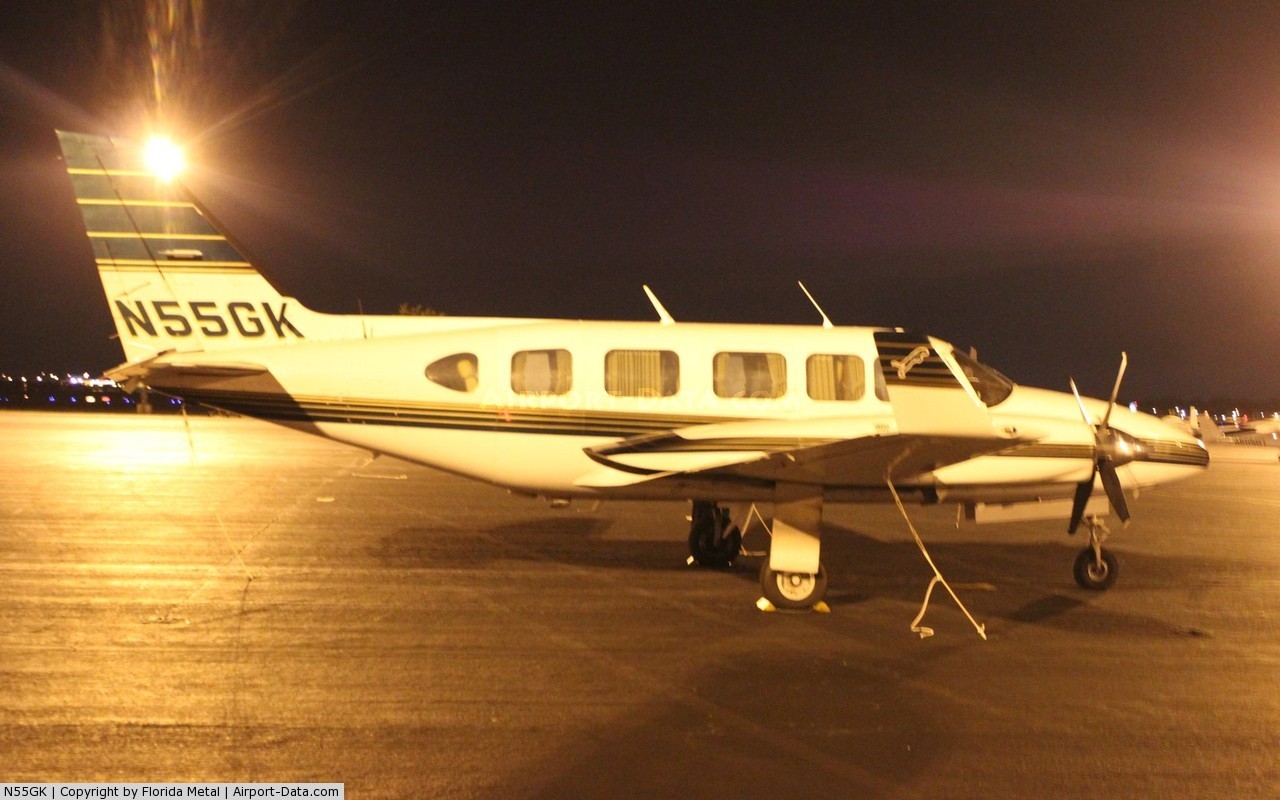

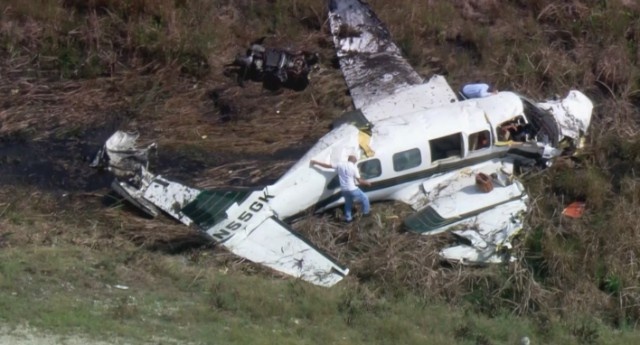
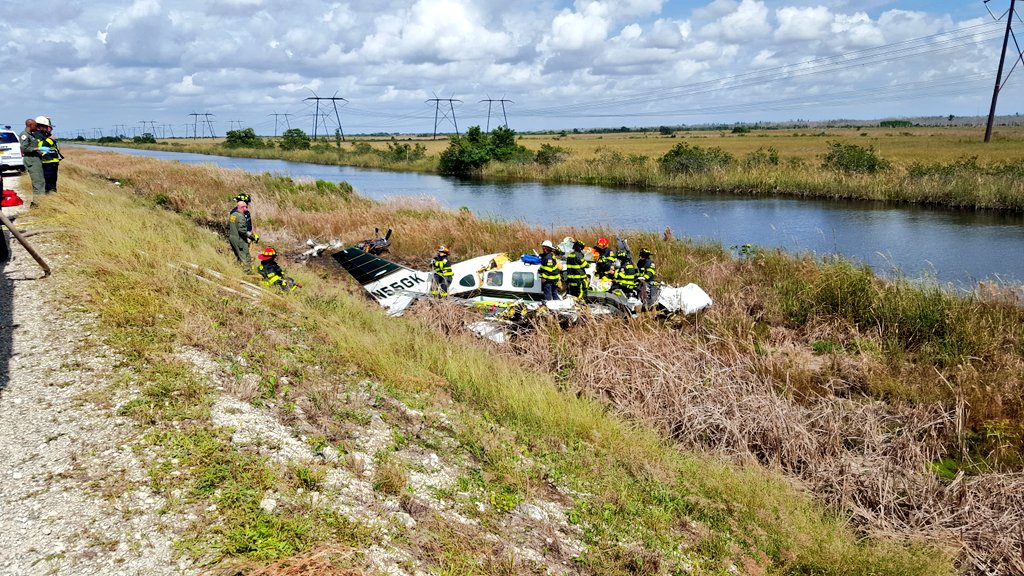

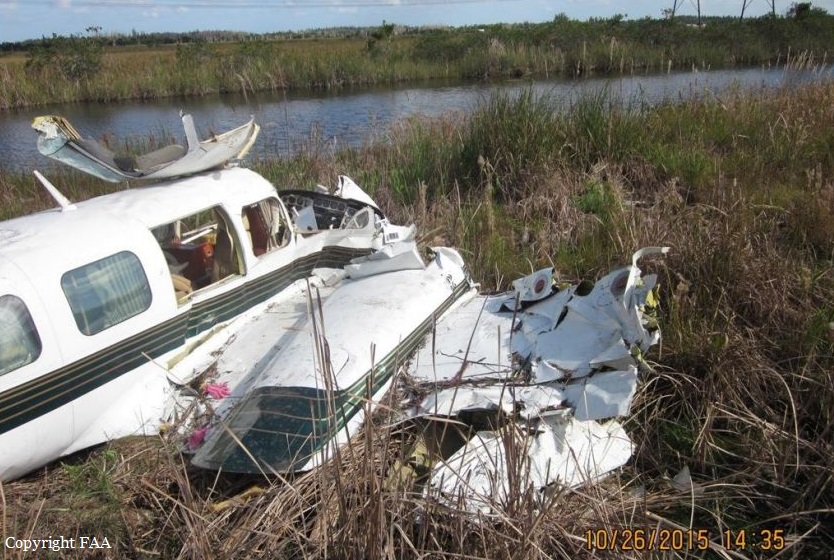
Crash of a Piper PA-31T Cheyenne I in Fort Lauderdale: 4 killed
Date & Time:
Apr 12, 2015 at 1625 LT
Registration:
N119RL
Survivors:
No
Schedule:
Orlando - Fort Lauderdale
MSN:
31T-7904002
YOM:
1979
Crew on board:
1
Crew fatalities:
Pax on board:
3
Pax fatalities:
Other fatalities:
Total fatalities:
4
Aircraft flight hours:
3267
Circumstances:
Following an uneventful personal flight, the pilot contacted the air traffic control tower controller and was immediately cleared to land. About 36 seconds later, the pilot reported "smoke in the cockpit." When asked to repeat, the pilot repeated "smoke in the cockpit." The tower controller cleared the pilot to land on any runway. About 47 seconds after the initial call of smoke, the pilot reported "mayday mayday mayday mayday mayday (unintelligible)." The airplane then crashed about ¼ mile short of the airport in a wooded area and burned. Security video showed the airplane pitch nose-down suddenly just before impact. The video revealed no visible smoke or fire trailing the airplane before ground impact. The pilot reported about 1,221 hours of total flight time on his Federal Aviation Administration first class medical certificate, issued about two months prior to the accident. He completed an initial training course for the airplane make and model 1 week before the accident. The airplane had recently undergone an annual inspection and extensive upgrades to its avionics. Both the left and right engines displayed contact signatures to their internal components characteristic of engines developing significant power at the time of impact, likely in the mid-to-high power range. The engines displayed no indications of any pre-impact anomalies or distress that would have precluded normal engine operation. Both propeller assemblies broke free from the engine during the crash sequence and the blades on both engines revealed signatures consistent with the development of power at impact. The center fuselage and cockpit areas were completely consumed in the postcrash fire. An examination of all remaining wires, wire bundles, switches, terminals, circuit breakers, electrical components, instruments, and avionics did not reveal evidence of precrash thermal distress. However, a small fire just before impact likely would not have had time to create thermal damage that would be discernable after an extensive postcrash fire.
Probable cause:
A rapid onset of smoke and/or fire inflight for reasons that could not be determined due to the postimpact fire and the condition of the wreckage.
Final Report:
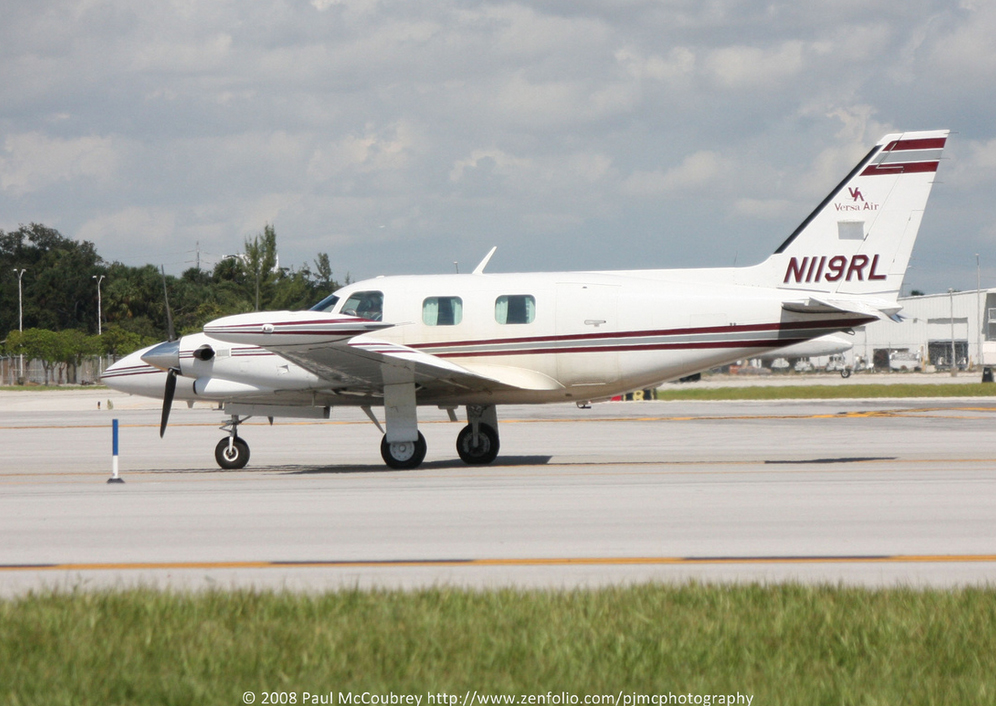


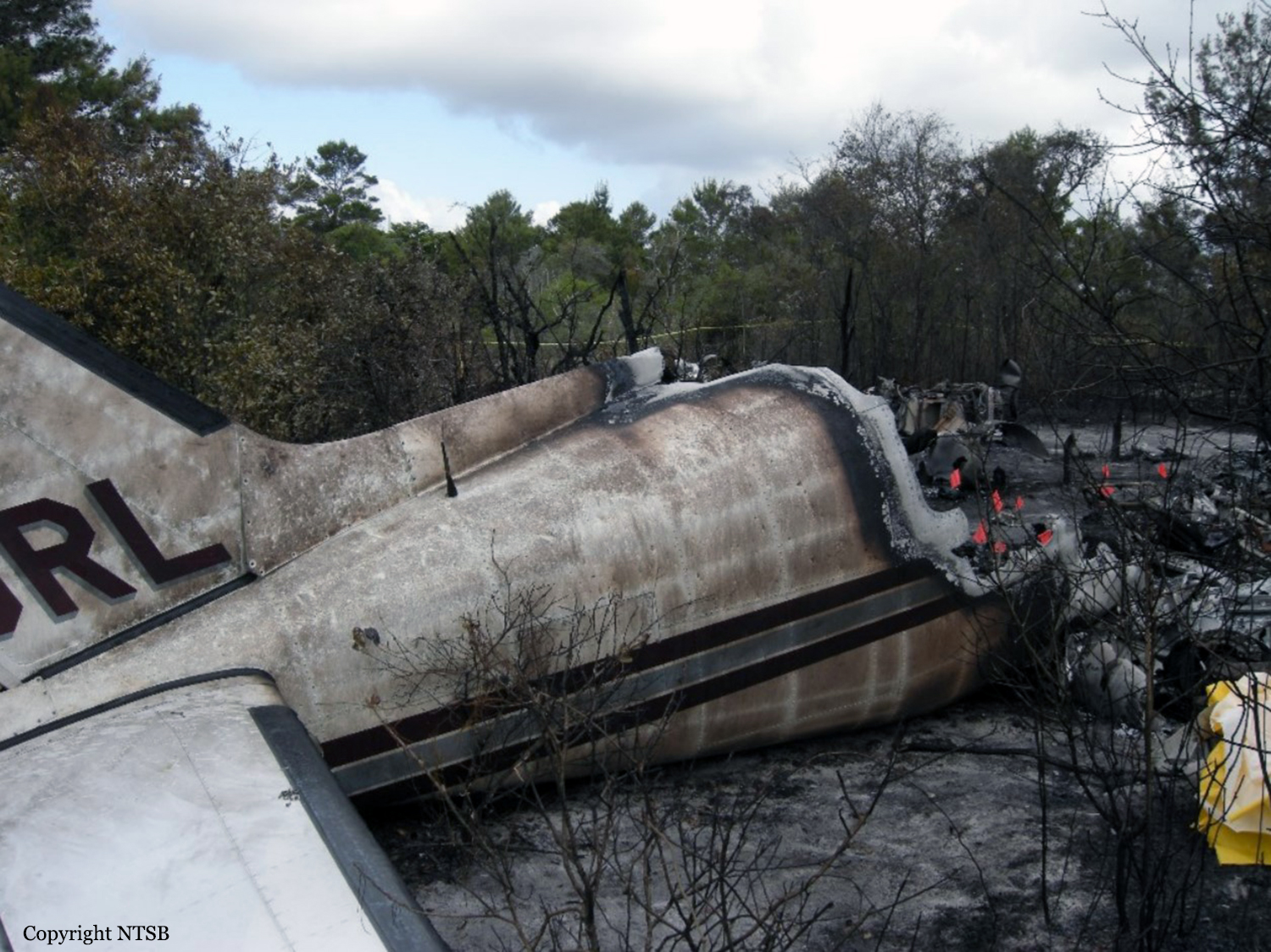
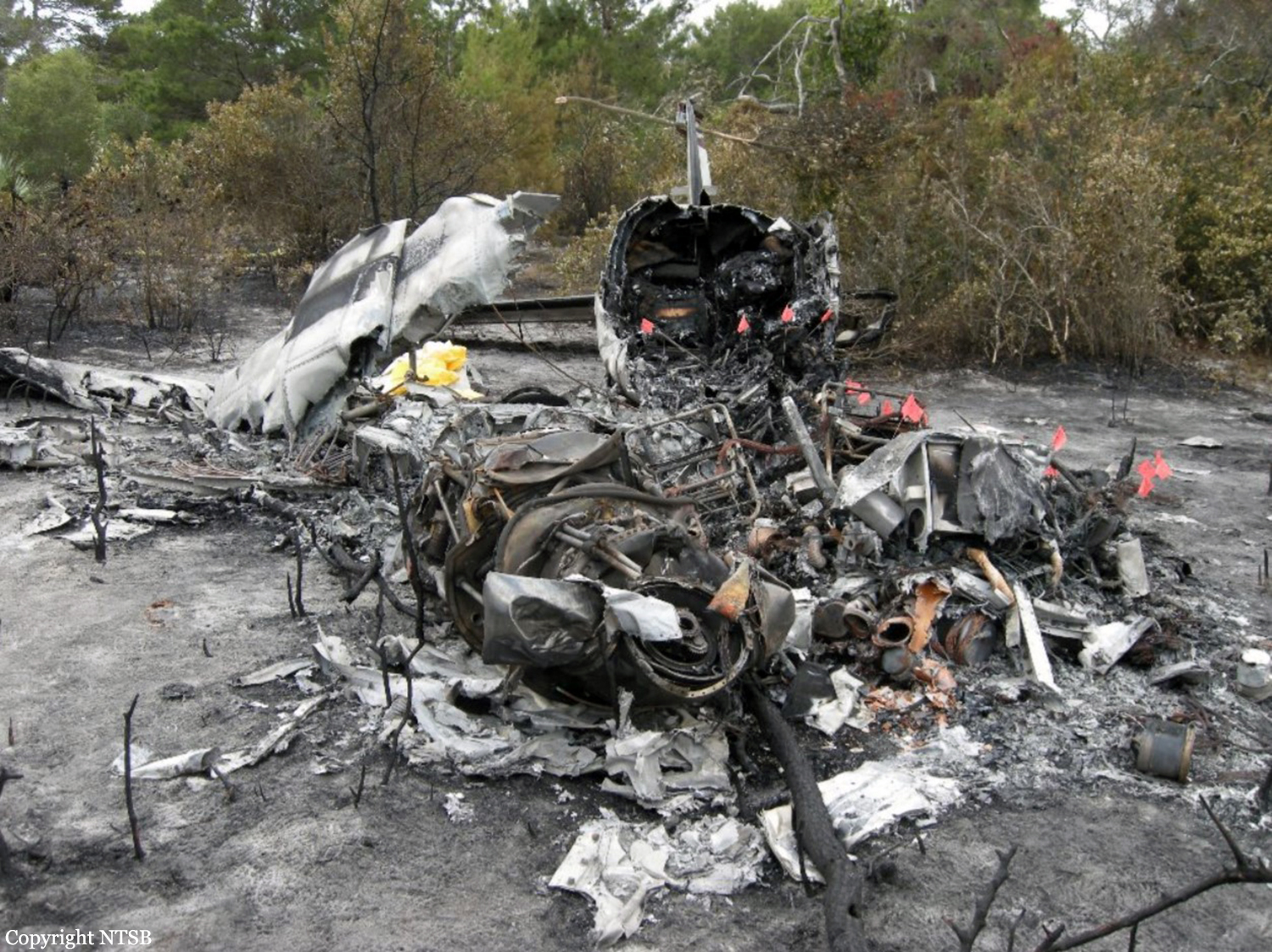


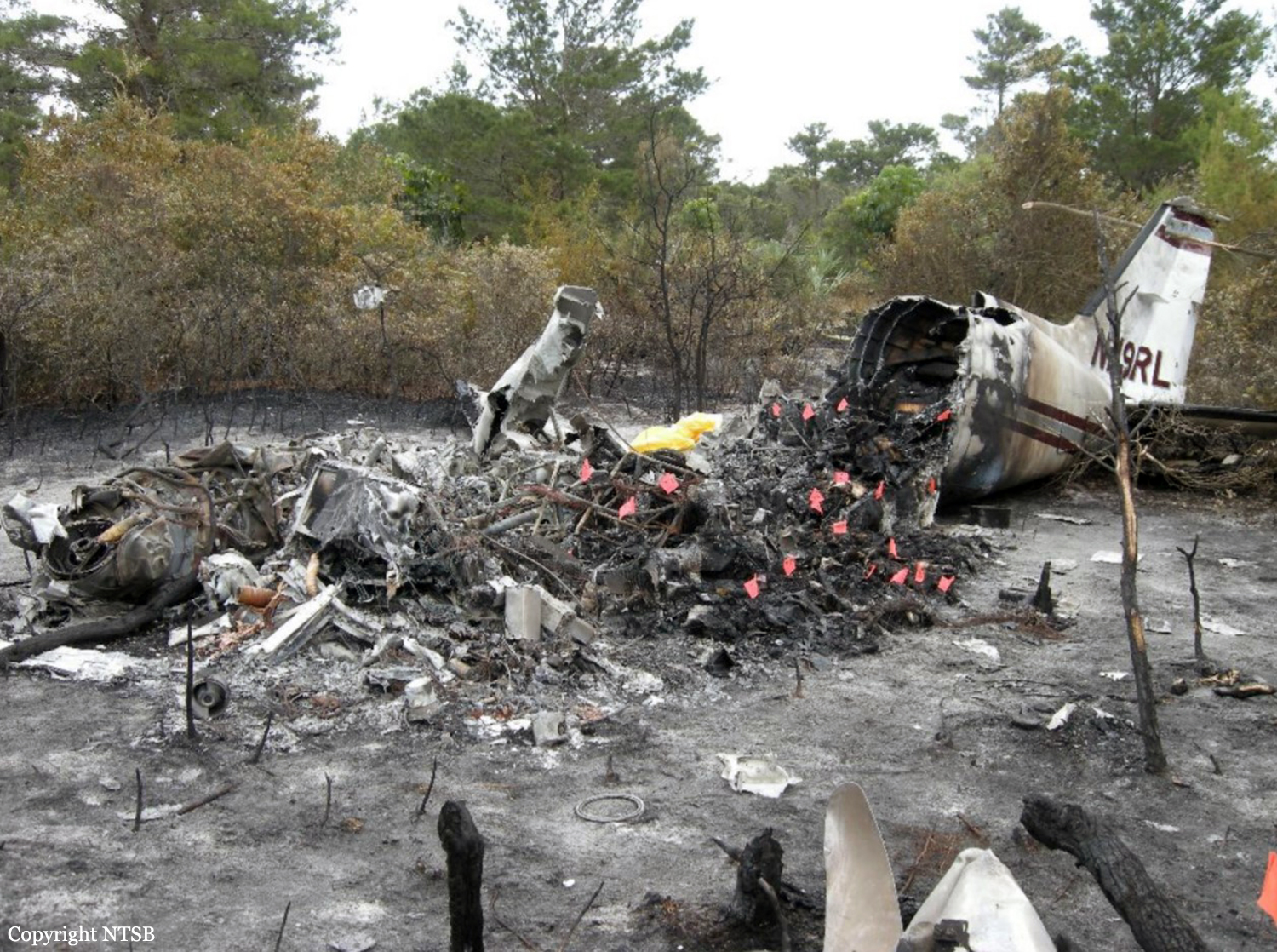
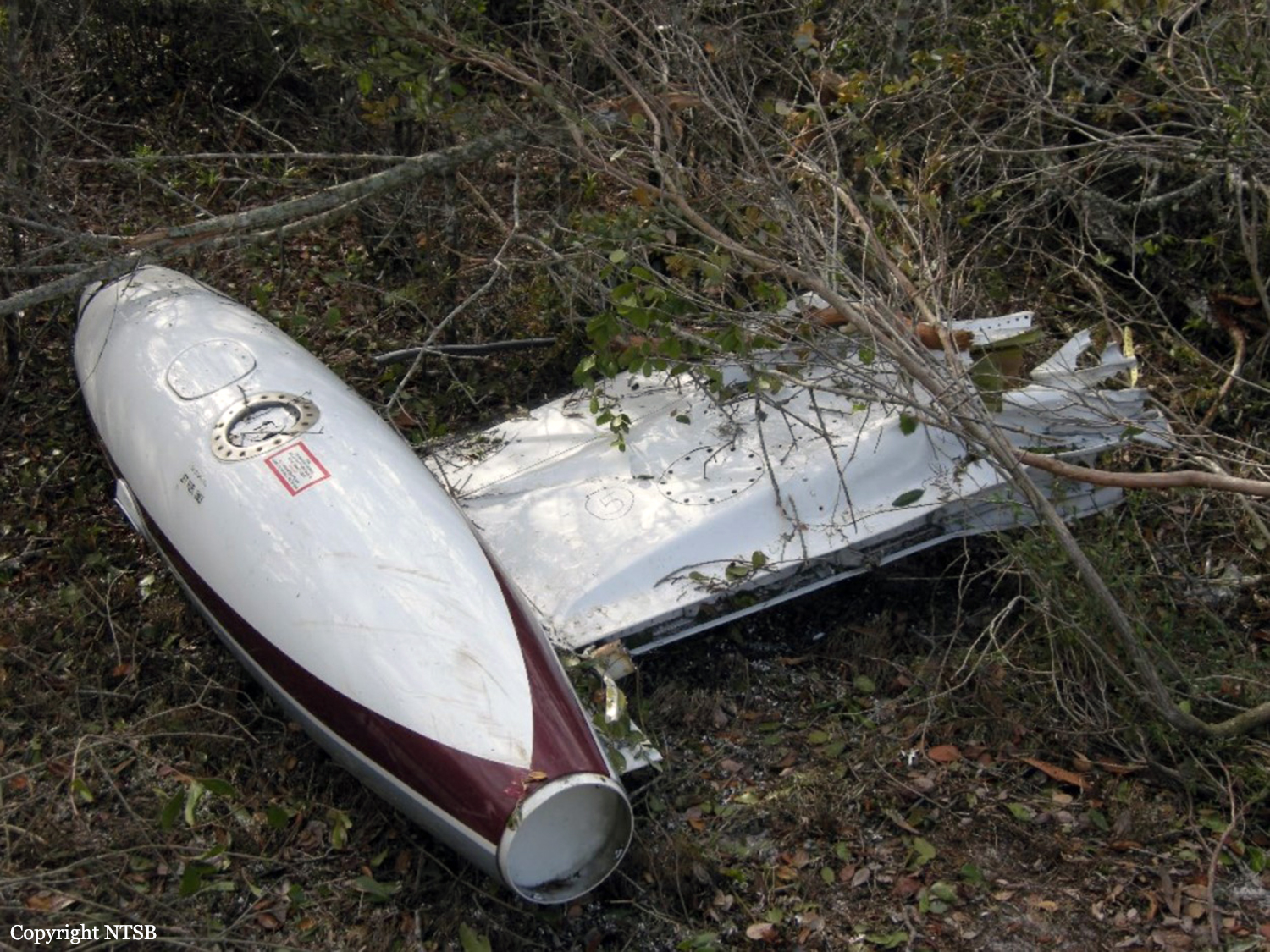

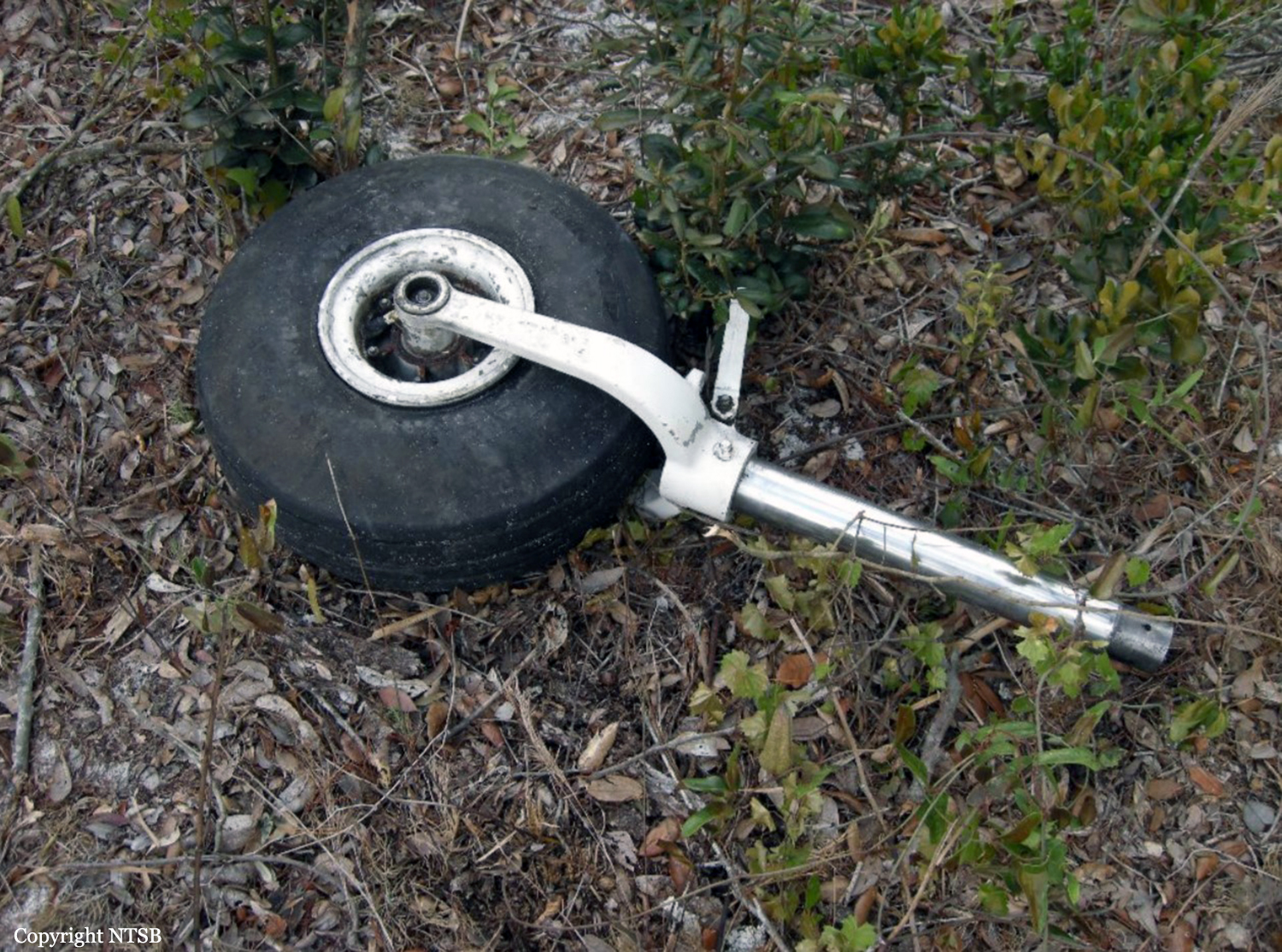
Crash of a Cessna 501 Citation I/SP in Stella Maris
Date & Time:
Feb 15, 2014 at 1640 LT
Registration:
C-GKPC
Survivors:
Yes
Schedule:
Fort Lauderdale - Stella Maris
MSN:
501-0253
YOM:
1983
Crew on board:
0
Crew fatalities:
Pax on board:
0
Pax fatalities:
Other fatalities:
Total fatalities:
0
Aircraft flight hours:
4579
Circumstances:
The aircraft belly landed at Stella Maris-Estate Airport, Bahamas. No one was hurt but the aircraft was damaged beyond repair. Apparently, the approach checklist was interrupted by the crew for unknown reason and the landing procedure was performed with the landing gear still retracted. The aircraft was owned by the private Canadian company Kelly Panteluk Construction and the airplane was inbound from Fort Lauderdale-Executive.
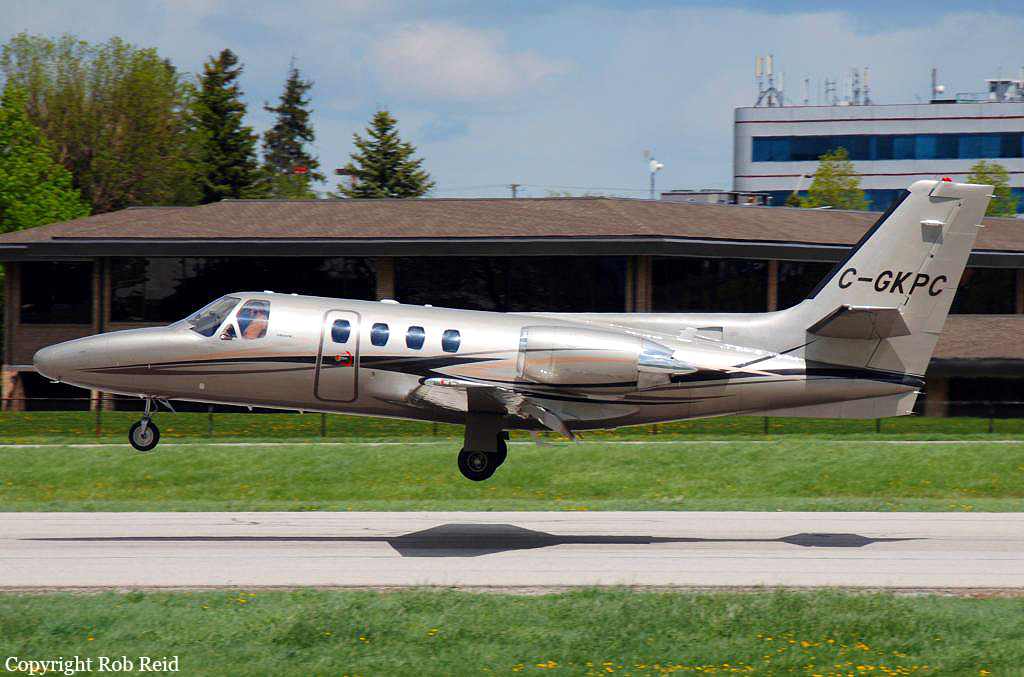

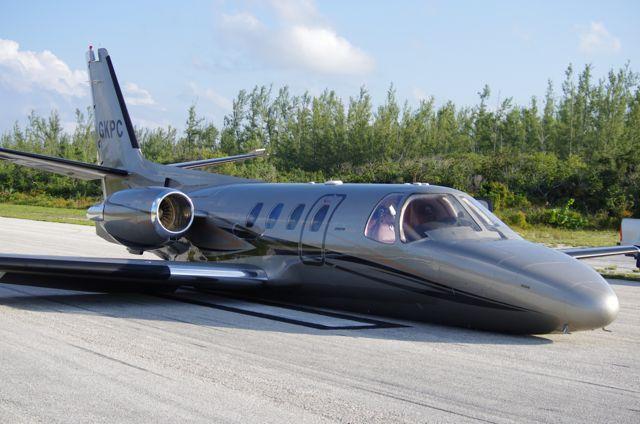
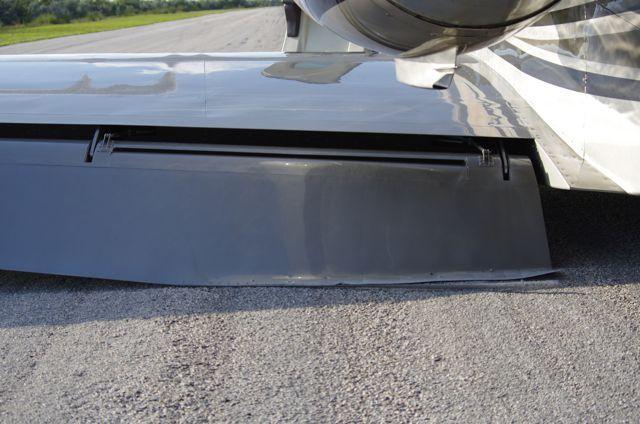

Crash of a Cessna 340A in Hampton Roads: 4 killed
Date & Time:
Oct 10, 2013 at 1209 LT
Registration:
N4TK
Survivors:
No
Schedule:
Fort Lauderdale – Hampton Roads
MSN:
340A-0777
YOM:
1979
Crew on board:
1
Crew fatalities:
Pax on board:
3
Pax fatalities:
Other fatalities:
Total fatalities:
4
Circumstances:
The instrument-rated pilot was on a cross-country flight. According to air traffic control records, an air traffic controller provided the pilot vectors to an intersection to fly a GPS approach. Federal Aviation Administration radar data showed that the airplane tracked off course of the assigned intersection by 6 nautical miles and descended 800 ft below its assigned altitude before correcting toward the initial approach fix. The airplane then crossed the final approach fix 400 ft below the minimum crossing altitude and then continued to descend to the minimum descent altitude, at which point, the pilot performed a missed approach. The missed approach procedure would have required the airplane to make a climbing right turn to 2,500 ft mean sea level (msl) while navigating southwest back to the intersection; however, radar data showed that the airplane flew southeast and ascended and descended several times before leveling off at 2,800 ft msl. The airplane then entered a right 360-degree turn and almost completed another circle before it descended into terrain. Examination of the wreckage revealed no evidence of any preimpact mechanical malfunctions or failures. During the altitude and heading deviations just before impact, the pilot reported to an air traffic controller that adverse weather was causing the airplane to lose "tremendous" amounts of altitude; however, weather radar did not indicate any convective activity or heavy rain at the airplane's location. The recorded weather at the destination airport about the time of the accident included a cloud ceiling of 400 ft above ground level and visibility of 3 miles. Although the pilot reported over 4,000 total hours on his most recent medical application, the investigation could not corroborate those reported hours or document any recent or overall actual instrument experience. In addition, it could not be determined whether the pilot had experience using the onboard GPS system, which had been installed on the airplane about 6 months before the accident; however, the accident flight track is indicative of the pilot not using the GPS effectively, possibly due to a lack of proficiency or familiarity with the equipment. The restricted visibility and precipitation and maneuvering during the missed approach would have been conducive to the development of spatial disorientation, and the variable flightpath off the intended course was consistent with the pilot losing airplane control due to spatial disorientation. Toxicological tests detected ethanol and other volatiles in the pilot's muscle indicative of postmortem production.
Probable cause:
The pilot's failure to maintain airplane control due to spatial disorientation in low-visibility conditions while maneuvering during a missed approach. Contributing to the accident was the pilot's ineffective use of the onboard GPS equipment.
Final Report:





